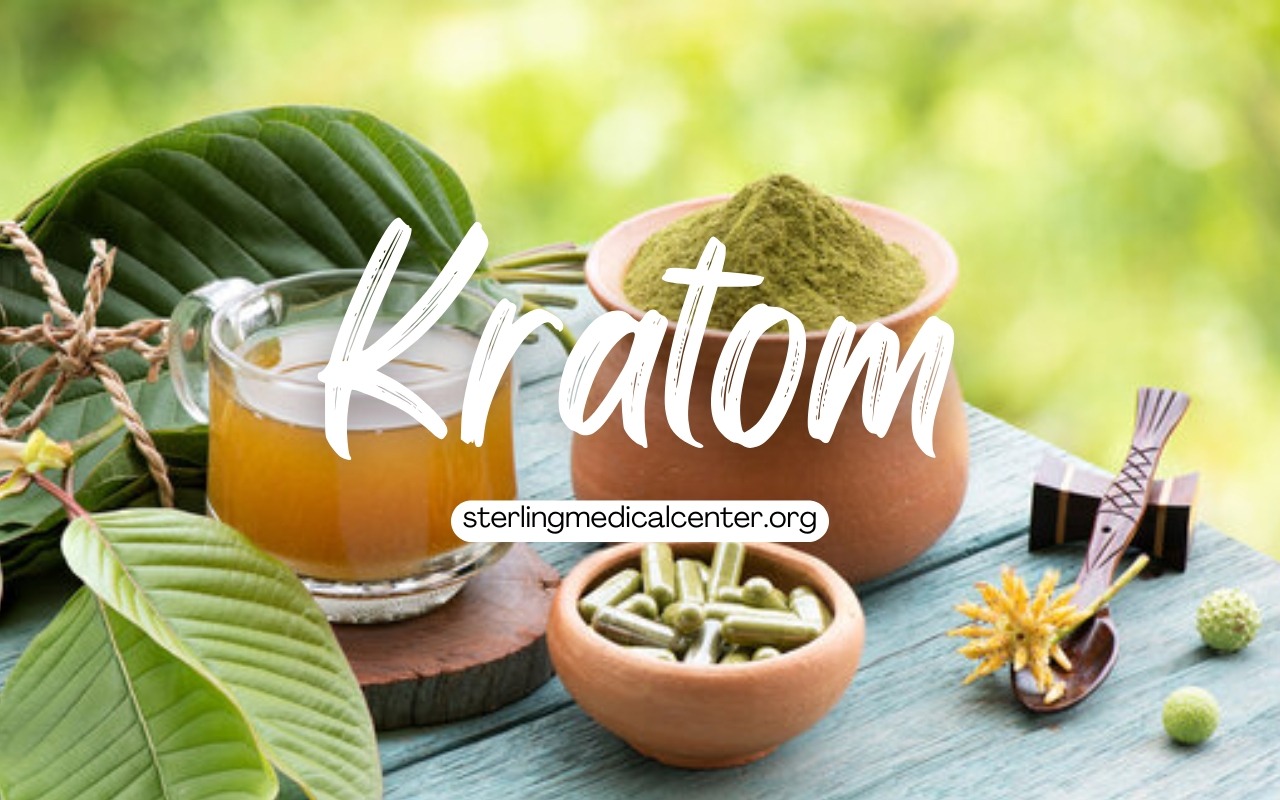
Kratom (Mitragyna speciosa) is a plant native to Southeast Asia that has been traditionally used for pain relief, energy enhancement, and mood support. In recent years, kratom has gained attention in modern medical research due to its potential analgesic, mood-enhancing, and opioid-withdrawal properties. However, questions remain regarding its safety, effectiveness, and potential risks.
At SterlingMedicalCenter.org, we are committed to evidence-based wellness and medical research. This article examines kratom’s potential health benefits, pharmacological effects, and safety concerns to provide a well-rounded understanding of its role in modern healthcare.
Traditional and Modern Uses of Kratom
For centuries, kratom has been used in regions such as Thailand, Malaysia, and Indonesia for:
- Pain relief – A natural analgesic for muscle aches and joint pain.
- Energy and endurance – Used by laborers to maintain stamina.
- Digestive health – Historically used to manage diarrhea and other gastrointestinal issues.
- Mood support – Certain kratom strains have been taken to reduce anxiety and improve well-being.
While traditional medicine acknowledges kratom’s therapeutic properties, modern scientific research is still evaluating its clinical potential.
The Pharmacological Effects of Kratom
Kratom’s primary active compounds, mitragynine and 7-hydroxymitragynine, interact with opioid receptors in the brain, leading to varied effects depending on the dosage:
- Low doses (1-5g): Stimulating effects, increased alertness, and focus.
- Moderate doses (5-10g): Mild pain relief, relaxation, and mood enhancement.
- High doses (>10g): Sedative effects, opioid-like pain relief, and drowsiness.
How Kratom Differs from Traditional Opioids
Unlike opioids, kratom does not appear to cause significant respiratory depression, which is the leading cause of opioid overdose deaths. However, kratom still interacts with opioid receptors, leading to potential dependency and withdrawal concerns.
Potential Health Benefits of Kratom
1. Pain Management
Kratom is increasingly used for chronic pain relief, particularly among individuals seeking alternatives to opioids. A 2020 study from Johns Hopkins University found that:
- 86% of kratom users reported effective pain relief.
- Lower side effect profiles were observed compared to opioids.
- 7-hydroxymitragynine was identified as a potent analgesic compound.
Despite these findings, clinical trials are needed to confirm kratom’s efficacy as a pain management tool.
2. Mood Enhancement and Anxiety Relief
Some individuals report that kratom improves mood, reduces stress, and enhances motivation. These effects may be linked to serotonin and dopamine receptor interactions, similar to certain antidepressants. However, more human studies are needed to determine kratom’s effectiveness for mood disorders.
3. Opioid Withdrawal and Addiction Recovery
Kratom has been explored as a harm reduction tool for individuals transitioning away from opioids. A 2020 Johns Hopkins study found that:
- 87% of surveyed kratom users experienced relief from opioid withdrawal symptoms.
- 80% reported a reduction in opioid cravings.
- 79% remained opioid-free while continuing kratom use.
While these results suggest a potential benefit, kratom itself can cause dependency, requiring further investigation into its long-term safety.
Potential Risks and Safety Concerns
1. Kratom Dependence and Withdrawal
Long-term kratom use can lead to physical dependence. Reported withdrawal symptoms include:
- Irritability and anxiety.
- Insomnia and restlessness.
- Nausea and digestive discomfort.
- Muscle aches and cravings.
A 2019 study in Drug and Alcohol Dependence found that 9% of surveyed kratom users met criteria for moderate-to-severe dependence, highlighting the need for cautious use and responsible dosing.
2. Quality Control and Product Safety
Since kratom is not FDA-regulated, concerns exist about product purity and consistency. Market studies have found:
- Heavy metal contamination (lead, arsenic, mercury).
- Bacterial contamination, including salmonella outbreaks linked to kratom.
- Adulteration with synthetic opioids or other substances.
3. Potential Health Risks
While kratom is less likely to cause overdose fatalities than opioids, there have been reported cases of serious adverse effects, including:
- Liver toxicity in chronic users.
- Cardiovascular effects, such as high blood pressure.
- Seizures, particularly in individuals using kratom alongside other substances.
The FDA has reported kratom-related deaths, though many involved co-use with opioids, benzodiazepines, or alcohol.
The Legal and Regulatory Status of Kratom
Kratom’s legal classification varies worldwide and within the U.S.:
- Banned in: Alabama, Arkansas, Indiana, Rhode Island, Vermont, Wisconsin.
- Regulated in: Arizona, Georgia, Nevada, Utah (subject to purity and consumer protections).
- Unregulated in many states, leading to concerns about product consistency.
Internationally, kratom is banned or heavily restricted in Australia, Sweden, Denmark, Japan, and Malaysia, while Thailand recently legalized kratom for medical use.
Future Directions in Kratom Research
1. The Need for Clinical Trials
Despite its widespread use, kratom research is still in its early stages. Key research priorities include:
- Conducting randomized controlled trials (RCTs) to assess efficacy and safety.
- Establishing standardized dosing guidelines.
- Investigating long-term health impacts.
2. Could Kratom Be Integrated into Mainstream Medicine?
To consider kratom for medical use, the following steps are necessary:
- Developing pharmaceutical-grade kratom extracts.
- Assessing its potential role in pain clinics and addiction treatment centers.
- Enhancing safety through regulatory oversight and quality control.
Conclusion: Balancing Kratom’s Benefits and Risks
Kratom holds potential for pain relief, mood enhancement, and opioid withdrawal management, but significant research gaps remain. At SterlingMedicalCenter.org, we advocate for science-backed, responsible wellness approaches. Based on current data:
- Kratom may serve as an alternative to opioids for pain relief, but more research is needed.
- Kratom may help some individuals with opioid withdrawal, but dependency risks must be carefully managed.
- Regulatory oversight is necessary to ensure product safety and consumer protection.
Final Takeaway:
Kratom remains an intriguing but controversial botanical compound. Medical supervision, responsible use, and continued research are essential for determining its full potential and long-term safety in modern healthcare.
Related: Unregulated Kratom: A Potential Ally or Risk in the Fight Against Opioid Addiction?